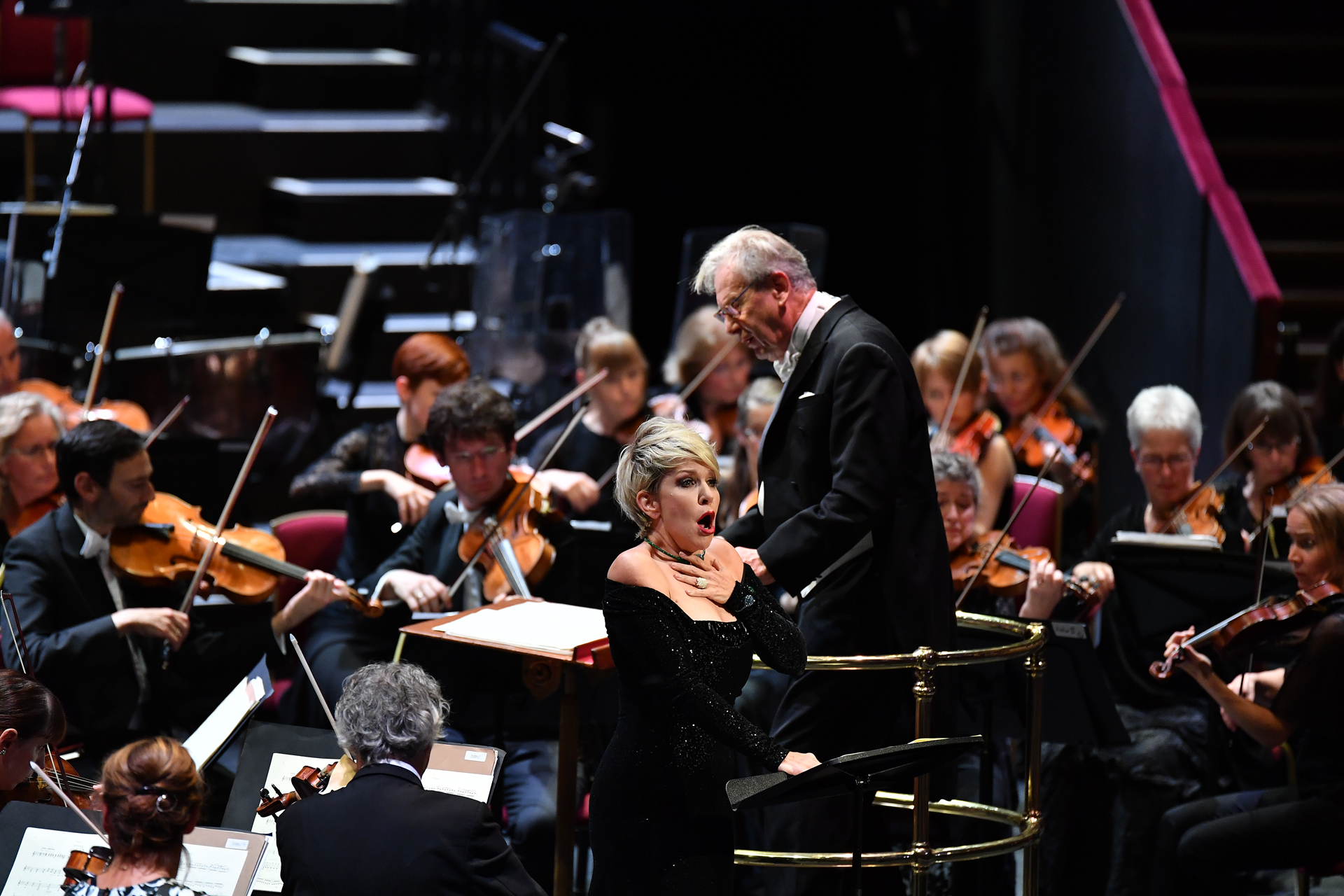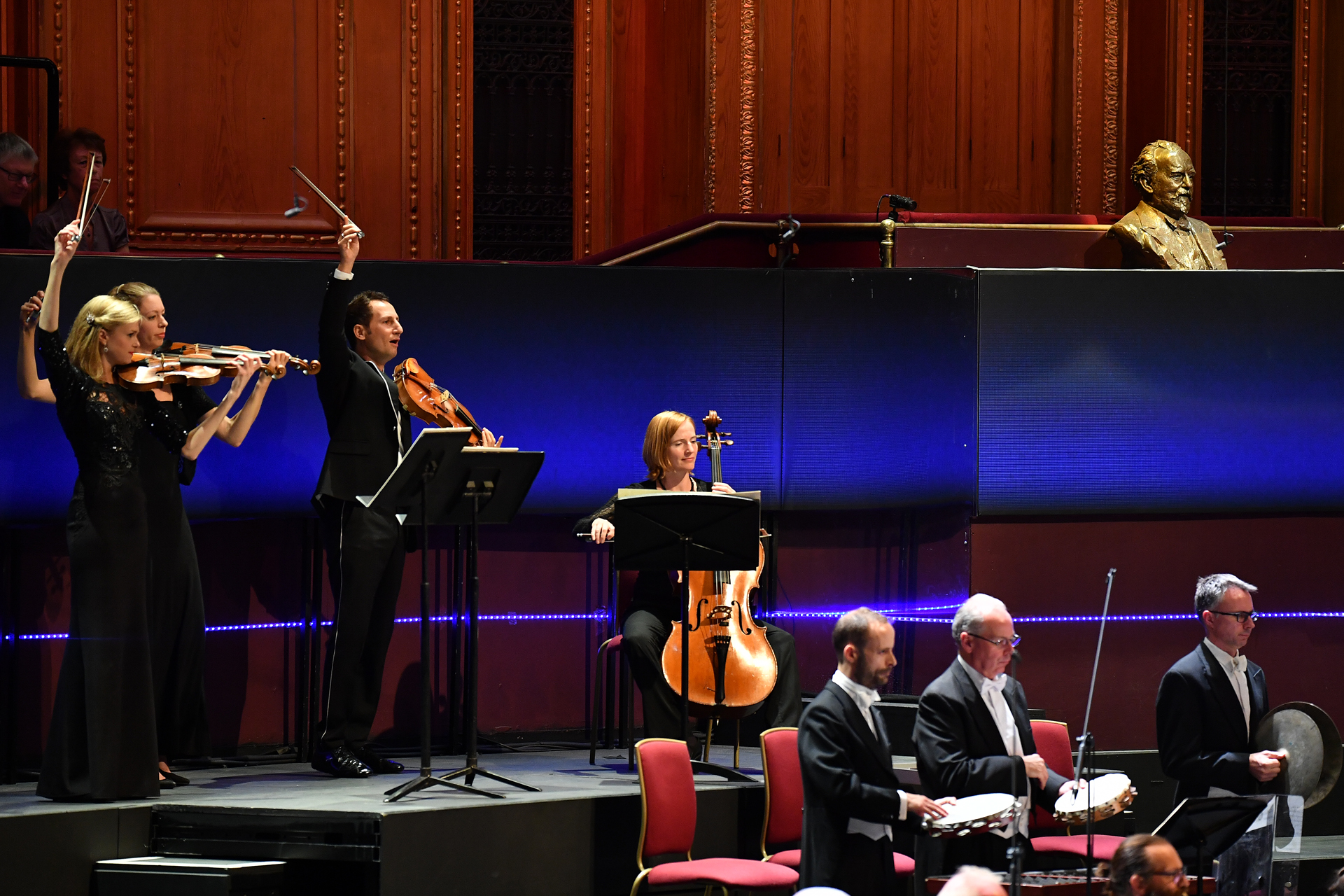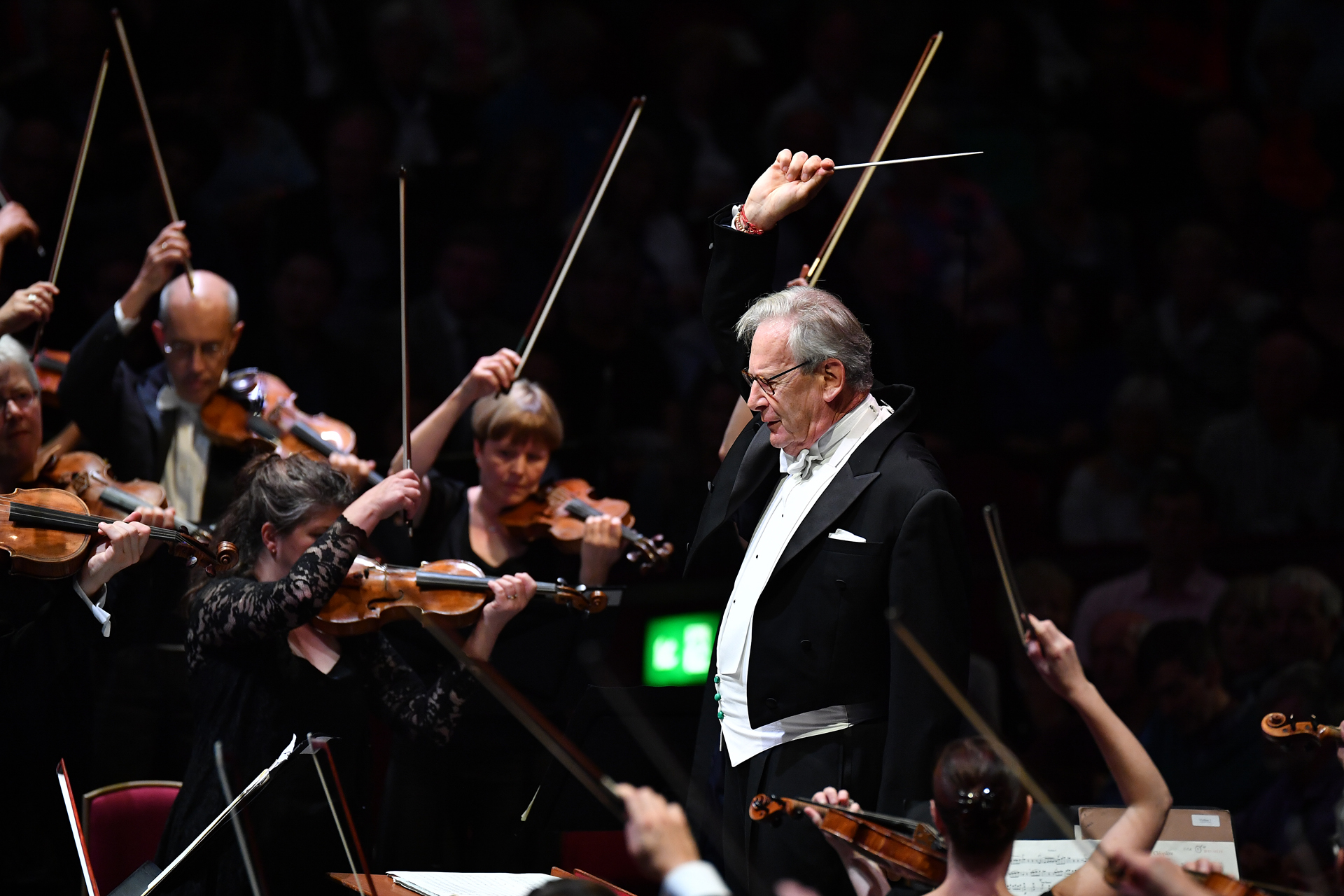How do you make your mark in a crucial last week after the Olympian spectaculars of Kirill Petrenko's Proms with the Berlin Philharmonic? Well, for a start, you stay true to recent principles by getting as many of your period-instrument Orchestre Révolutionaire et Romantique players as can manage it on their feet – Gardiner did it earlier this year in selected items on his mostly-Schumann programmes with the LSO – to dive headlong into the spume of Berlioz's Le Corsaire Overture. Throw in two charismatic soloists, plan special spatial effects that make dramatic sense, and have your orchestra play their hearts out with startling freshness in something like the colours the composer would have known when he calculated his unique sounds.
Or nearly. If there were a moment or two when this mind wandered ever so slightly from the enriching but exhausting brilliance of it all, they would have been when Joyce DiDonato pushed the middle to upper register as Cleopatra approaching her death. Here there simply isn't the opulence of an ideally upholstered mezzo voice like that of Karen Cargill, who somehow owns this "dramatic cantata". But how DiDonato atones for any shortcomings in a less than god-given instrument: you could say she lives the role with the intensity Balzac describes in the great Racine actress Rachel. 
DiDonato did a marvellous job of plunging us into the last moments of the far less volatile Dido of Les Troyens, all hushed pathos and nostalgia, though it’s difficult to make the reminiscence of her love duet with Aeneas move us to tears out of context. The Proms palm here still goes to Anna Prohaska’s Purcell in her Cleopatra/Dido adventure with the extraordinary Il Giardino Armonico. Before the suffering of Berlioz’s Carthaginian queen, though, came the Royal Hunt and Storm which leads to the lovers’ consummation. Spatial effects here were wondrous, with saxhorns coming closer from left and right, onstage and off. There was another surprise, the source of which I've only discovered from an orchestral player tweeting about this review - the ululating chorus, uncredited in the programme, which I thought was a recording, was actually delivered by the orchestra. Extra kudos. 
Tamestit’s Harold/Hector had free rein to wander and watch the pilgrims of the second movement in evening prayer and arpeggiate gently, finally raising one hand to his brow as they disappear into the distance. Oboist Michael Niesemann was fearless in making a rough rustic sound as an Abruzzo highlander leading the Serenade which follows. And then we were among the brigands, who threatened to swamp our hero, only for Tamestit to escape and join seraphic solo violinists and cello as a string quartet remembering the pilgrims in a higher sphere (pictured above). 
If orchestras and conductors want to make their concerts more enticingly visual, forget the lights or the elaborate artworks; let the performers create the drama. This is the way forward, if only in special circumstances. Criminal that it wasn't filmed for transmission on BBC Four – but then I doubt if planners could have anticipated what Gardiner the impresario intended. He always has surprises up his sleeve in this, his golden age.












